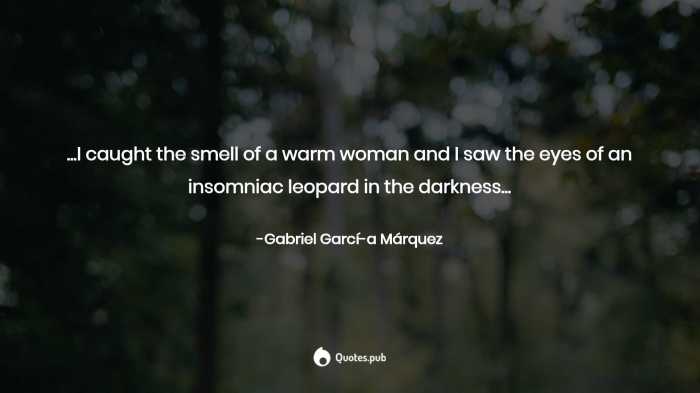Merry go round langston hughes – Embark on a captivating journey into Langston Hughes’s “Merry-Go-Round,” a poem that masterfully weaves symbolism, imagery, and profound themes into a thought-provoking tapestry. Prepare to be transported to a realm where the merry-go-round serves as a potent metaphor, inviting us to contemplate the complexities of life, society, and the human experience.
Throughout the poem, Hughes employs vivid imagery to paint a vibrant picture of the merry-go-round’s allure and the emotions it evokes. The whirling colors, the vibrant figures, and the enchanting music create a sensory experience that captivates the reader, drawing them into the poem’s intricate web of meaning.
Symbolism and Imagery
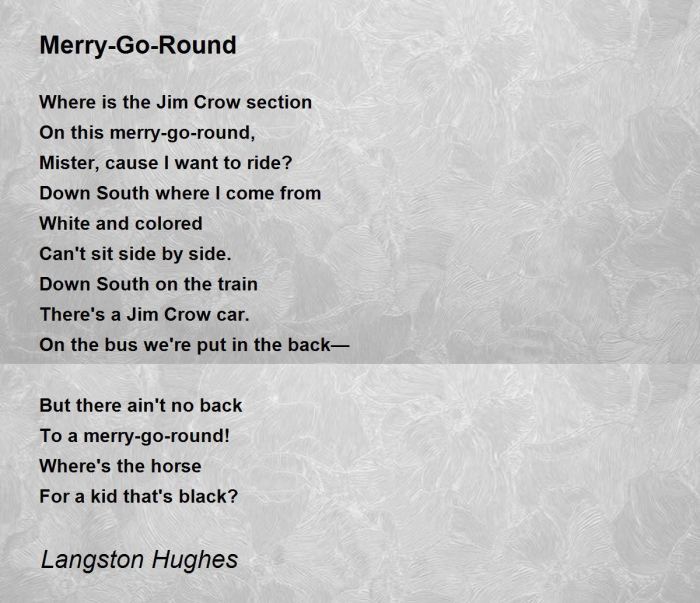
Langston Hughes’ “Merry-Go-Round” employs vivid imagery and powerful symbolism to convey the complexities of life, the allure of fleeting pleasures, and the search for meaning amidst the mundane.
Langston Hughes’s “Merry-Go-Round” captures the bittersweet nostalgia of childhood. The poem’s vivid imagery and poignant tone evoke a sense of longing and reflection. For those seeking a deeper exploration of the poem, One Clue Crossword Chapter 10 offers an engaging and interactive way to test your knowledge and delve into the poem’s themes.
Symbolism of the Merry-Go-Round
The merry-go-round serves as a central symbol in the poem, representing the cyclical nature of life and the pursuit of elusive happiness. Its constant rotation mirrors the repetitive routines and unfulfilled desires that characterize human existence.
Imagery of the Merry-Go-Round and Surroundings, Merry go round langston hughes
Hughes paints a vivid picture of the merry-go-round, using sensory details to evoke its allure and transience:
- “The horses flash by like a streak of light”
- “The world is a blur of color”
- “The music jars, a throbbing in my head”
These images convey the exhilarating yet disorienting nature of the pursuit of pleasure, suggesting that true happiness lies not in fleeting moments but in more meaningful pursuits.
Contribution to Overall Meaning
The symbolism and imagery of the merry-go-round work together to create a poem that explores the bittersweet nature of life. Hughes suggests that while the pursuit of pleasure can provide temporary distraction, it ultimately fails to satisfy the deeper human need for purpose and connection.
Themes
The poem “Merry-Go-Round” by Langston Hughes explores several major themes:
The fleeting nature of time and the loss of innocence:The merry-go-round represents the cyclical nature of time, with its constant motion and repetition. The children riding the merry-go-round symbolize the innocence and carefree spirit of youth, which is gradually lost as they grow older and experience the complexities of life.
The Illusion of Happiness
The merry-go-round’s bright colors and cheerful music create an illusion of happiness, but this happiness is ultimately fleeting and artificial. The children riding the merry-go-round are oblivious to the fact that their joy will eventually end, just as the merry-go-round will eventually stop.
The Power of Memory
The merry-go-round also serves as a reminder of the power of memory. The children riding the merry-go-round will never forget the joy they experienced, even though it is now gone. In the same way, we all have memories of happy times that we can cherish, even if those times are now behind us.
The Poet’s Perspective
Hughes’s perspective on the themes presented in the poem is bittersweet. He acknowledges the fleeting nature of time and the loss of innocence, but he also finds solace in the power of memory. He suggests that even though our happiness may be temporary, it is still worth cherishing and remembering.
Structure and Form
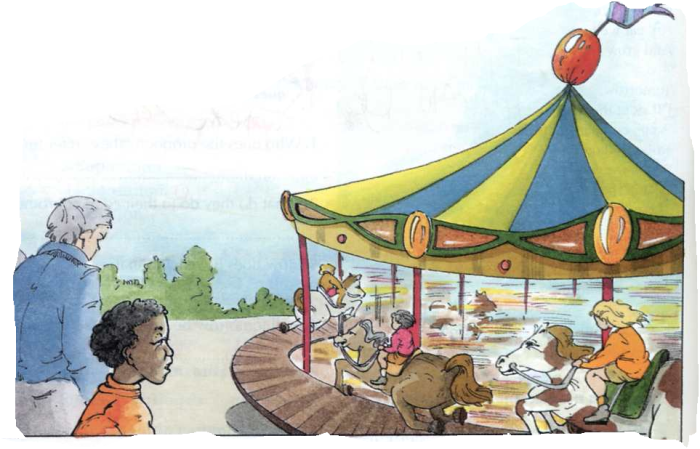
Langston Hughes’s “Merry-Go-Round” is a compact and rhythmic poem consisting of three stanzas, each with four lines. The poem follows an ABAB rhyme scheme, where the first and third lines of each stanza rhyme, and the second and fourth lines rhyme.
This rhyme scheme contributes to the poem’s sing-song-like quality, enhancing its musicality and memorability.
Stanzas and Lines
The poem’s three stanzas represent distinct moments or perspectives. The first stanza introduces the merry-go-round as a symbol of childhood joy and wonder. The second stanza shifts to a more somber tone, highlighting the fleeting nature of childhood and the inevitability of growing up.
The third stanza returns to a sense of acceptance and nostalgia, reflecting on the bittersweet memories of childhood.
Brevity
The poem’s brevity is significant in several ways. It allows Hughes to convey a complex range of emotions and ideas within a concise and impactful form. The poem’s brevity also emphasizes the transient nature of childhood and the bittersweet feelings associated with it.
The reader is left with a sense of nostalgia and a lingering appreciation for the fleeting moments of joy.
Historical and Cultural Context
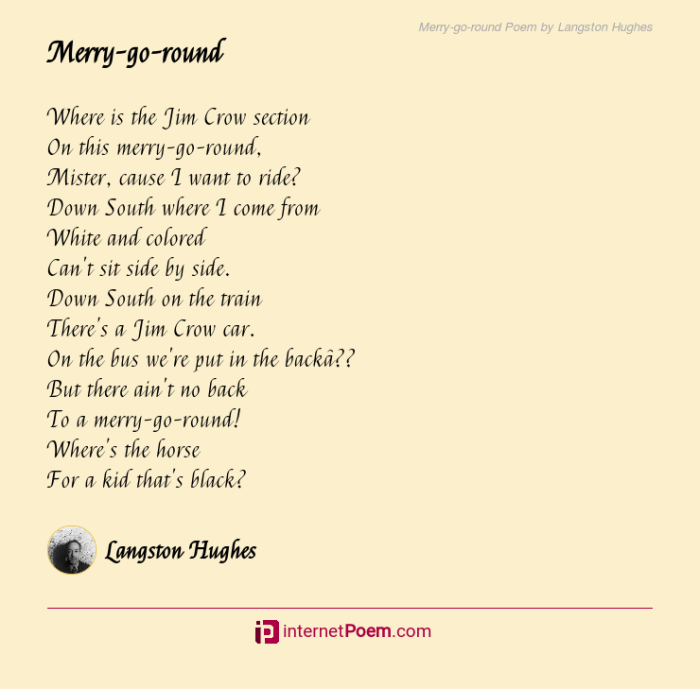
Langston Hughes’s “Merry-Go-Round” was written during the Harlem Renaissance, a period of significant cultural and social change for African Americans. The poem reflects the complex social and cultural norms of the time, particularly the tension between the desire for assimilation and the need to preserve cultural identity.
Cultural Significance of the Merry-Go-Round
The merry-go-round was a popular amusement ride during the early 20th century. It represented a sense of joy and excitement, particularly for children. However, for African Americans, the merry-go-round also carried a deeper cultural significance. It symbolized the promise of equality and integration, yet also the barriers that prevented them from fully participating in American society.
Personal Interpretation: Merry Go Round Langston Hughes
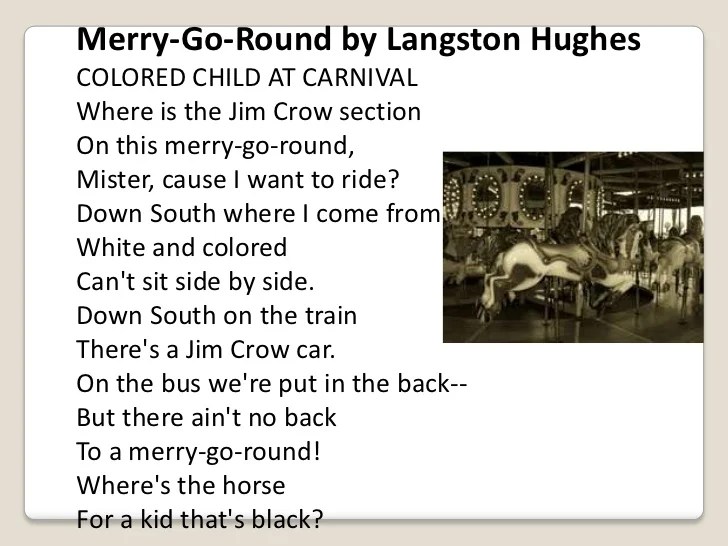
Langston Hughes’s “Merry-Go-Round” captures the bittersweet nostalgia of childhood memories and the complexities of the human experience. The poem’s vibrant imagery and evocative language resonate deeply with me, evoking memories of my own youthful joys and the inevitable passage of time.
The merry-go-round, a symbol of childhood wonder and freedom, becomes a metaphor for the fleeting nature of happiness. As the children ride the horses, they experience a moment of pure joy, oblivious to the world around them. However, the music eventually stops, and they must dismount, returning to the reality of everyday life.
Unique Insights and Perspectives
The poem’s vivid imagery and use of sound devices create a sensory experience that transports the reader into the child’s world. The “whirling horses” and the “tinny music” evoke a sense of excitement and wonder. However, the abrupt ending, with the music “sudden[ly] stopp[ing],” highlights the impermanence of childhood and the inevitability of change.
Hughes’s poem also explores the themes of innocence and experience. The children on the merry-go-round are innocent and carefree, unaware of the complexities of the adult world. As they grow older, they will inevitably lose this innocence, gaining experience and wisdom but also the weight of responsibility and the knowledge of life’s challenges.
Through its evocative imagery and exploration of universal themes, “Merry-Go-Round” offers a profound meditation on the nature of childhood, the passage of time, and the complexities of human experience.
FAQ
What is the central metaphor in “Merry-Go-Round”?
The merry-go-round serves as a metaphor for the cyclical nature of life, the pursuit of fleeting pleasures, and the elusive search for fulfillment.
How does Hughes use imagery to create a vivid sensory experience?
Hughes employs vivid descriptions of the merry-go-round’s colors, sounds, and movement to create a multisensory experience that immerses the reader in the poem’s atmosphere.
What are the major themes explored in “Merry-Go-Round”?
The poem explores themes of nostalgia, the search for meaning, the allure of superficial pleasures, and the inevitability of time’s passage.
